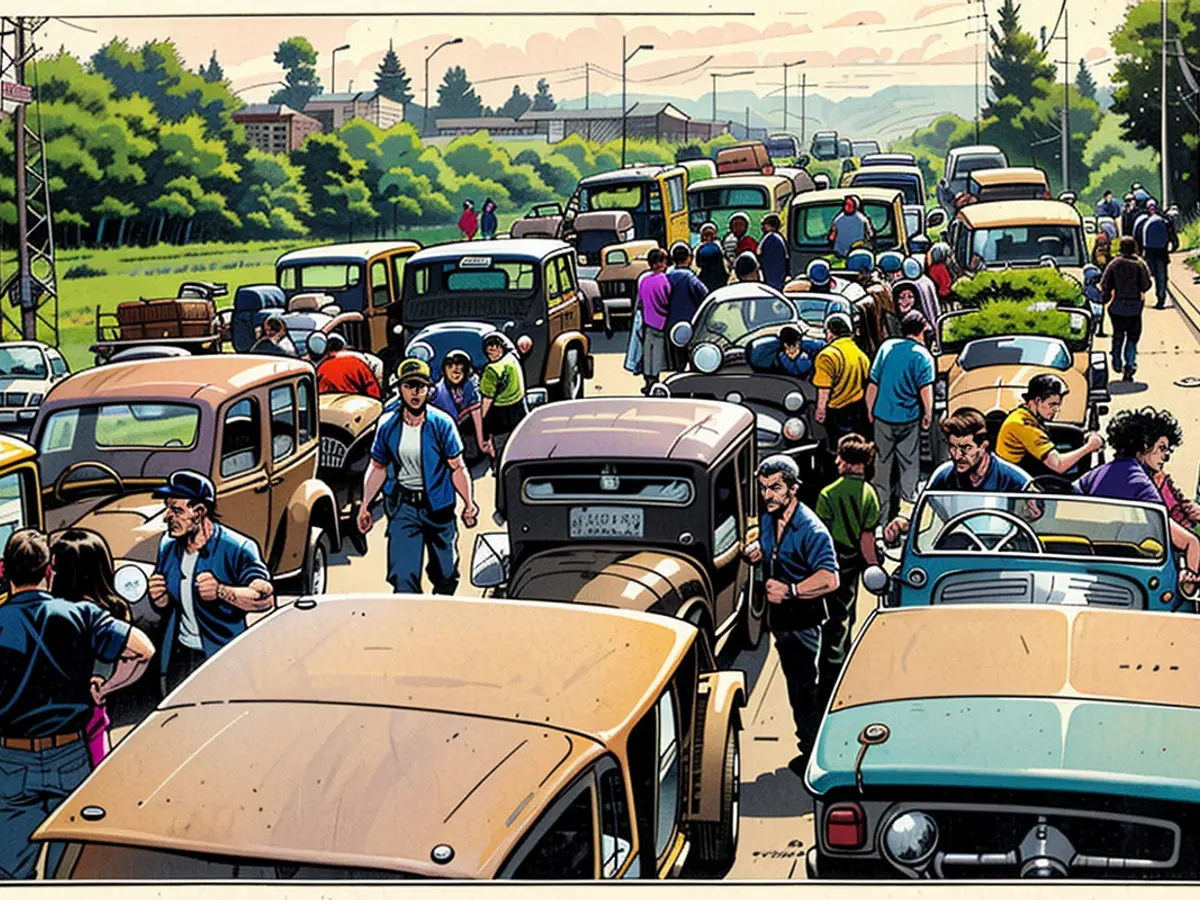The Italian highway reaches its centennial anniversary.
It's a common misconception you always hear: Hitler invented the highways. Wrong again. Italy had the world's first operational autostrada, way before the rise of the Nazis. And it's 100 now.
You know the drill at foreign toll booths. You're just millimeters shy of the reader's mark, your German card refuses to work, and the driver behind starts honking.
Imagine the beauty back then, at the Italian lakes, a hundred years ago. With a car, you were almost the lone ranger. Payments weren't automated, they were done in cash at the rest area, and a polite uniformed guard would salute at the barrier.
Exactly a century ago, on September 21, 1924, the world's first genuine highway was opened here, between Milan and Varese, 50 kilometers north. Or rather, the first autostrada. The myth that Adolf Hitler invented the highways is just a load of bull, in today's terms - false information, the old-fashioned kind.
Fact is, the idea came from entrepreneur Piero Puricelli, the man behind the legendary Monza racetrack, later ennobled as Count. He founded a company called Società Anonima Autostrade in 1921, sort of the Italian version of Autobahn GmbH. The concept: a toll road for fast traffic only, free of obstacles like crossings, carts, carriages, bicycles, or pedestrians. That was a very futuristic concept back then. With hardly any cars on Italian roads, just 57,000, this kind of ambitious undertaking was daring.
Most people at the time were not into moving around. They preferred staying cozy in their familiar surroundings. Those who had to travel longer distances took the train. On the often unpaved countryside roads, horse-drawn carriages were the most common mode of transport. The first section of what later became the Autostrada dei Laghi (Highway of the Lakes), later the A8, was a daring adventure.
The first trip was made by the then King Vittorio Emanuele III in a Lancia vehicle. He also cut the ribbon, with six soldiers standing guard. The Rome newspaper "La Tribuna" appreciated it: "A highly enjoyable drive on concrete as smooth as parquet. Without those pesky ruts, cyclists, or anything that could send you directly to the afterlife..." Even Germany reported on it, but not about a highway, but about a "-only car road".
Initially, the Italians estimated daily traffic of 1,000 cars on the route. But there were rarely more than a few dozen - possibly due to the nightly closure of the autostrada. The next section was opened in 1925, stretching all the way to Como by the same name. Today, it's the heavily-traveled A9 by tourists.
Incidentally, at that time, Hitler was in prison in Bavaria, serving a five-year sentence for a coup attempt in November 1923. He wouldn't rise to power until 1933, when he proposed a program for the construction of four-lane "Führer roads" across Germany. The plans were from the 1920s, though unmentioned. The first section of a "crossing-free motorway" was also opened as early as August 1932, between Cologne and Bonn, today's A555.
There was a certain rivalry between the Fascists in Berlin and Rome back then. Italy's dictator Benito Mussolini, who had been in power since 1922, boasted at the opening of Milan-Varese: "The highways are a great Italian achievement, and a very concrete sign of our engineering prowess - not unworthy of the sons of ancient Rome." However, cultural historian Conrad Kunze ("Germany as an Autobahn") sees it differently today. In his view, Mussolini was way behind Hitler in terms of funds and propaganda. "Where they were alike was in the attempt to monumentalize the road as a great historical work," said the scientist from Berlin. "The German version was much larger, more expensive, deadlier, faster, and more famous - as everything in the Third Reich was several times larger than in Italy."
For the record, there are also experts who consider the highway even older. In New York, there was the Long Island Motor Parkway in 1908, almost exclusively used as a racetrack - an expensive luxury for wealthy dandies. In Berlin, the Avus (Automobile Traffic and Practice Road) was inaugurated in 1921, a luxury for the wealthy. Both shared little with today's highway - a public road for motorized traffic, designed to quickly get from A to B.
Above all, the idea of building a widespread network of highways was already present in Italy at the time. The first autostrada was costly but overall, prices were significantly lower: between 9 and 60 lire, depending on the size of the vehicle. Today, the single trip for cars is uniformly 3.80 euros. But on this special day, the trip is free. To celebrate the occasion, cars from a century ago will hit the road.
The autostrada, opens its doors to traffic for the first time, offering a smoother journey for vehicles, away from the ruts and dangers of unpaved roads. Over a century later, the same A8 highway is bustling with tourists, a stark contrast to its early days when it barely saw a few dozen cars.
The plans for a four-lane highway in Germany, known as "Führer roads," are proposed by Adolf Hitler in 1933, but the concept of a toll road for fast traffic, free of obstacles, was already a reality in Italy with the opening of the Milan-Varese autostrada in 1924.






